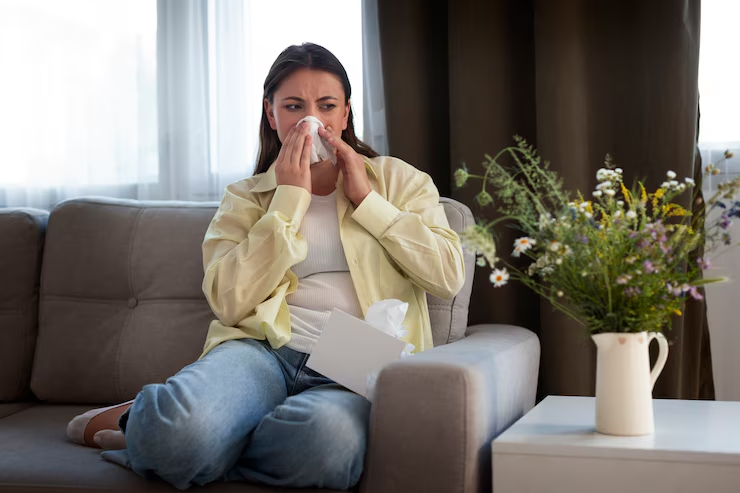Sneezing, runny nose, scratchy throat. When these symptoms hit, it’s easy to assume you’ve got a cold. But what if it’s not a cold at all? What if it’s allergies?
Colds and allergies can feel very similar, especially at first. They both affect your nose, eyes, and throat, and both can make you feel miserable. However, understanding the differences between the two can help you treat your symptoms correctly and avoid unnecessary medications or doctor visits.
Let’s explore 10 key differences between a cold and allergies to help you tell them apart and feel better faster.

1. Cause of the Symptoms
First, let’s look at the root cause of each condition. The common cold is caused by a virus, most often a rhinovirus. When you catch a cold, it means that your body is responding to a viral infection. Your immune system kicks into gear to fight it off, and that’s what leads to many of the familiar symptoms like coughing, congestion, a sore throat, and sometimes a low-grade fever.
Allergies, on the other hand, are not caused by a virus at all. They are actually an overreaction of the immune system to a harmless substance, such as pollen, pet hair, mold, or dust. Instead of ignoring these harmless particles, your immune system mistakes them for a threat and releases histamines, which trigger sneezing, watery eyes, and other allergic responses.
2. Time of Year
Another key difference lies in when the symptoms occur. Colds are much more common during colder months, when people spend more time indoors and viruses can spread more easily through close contact.
Allergies, though, tend to follow the seasons. Spring is notorious for tree pollen, summer brings grass pollen, and autumn brings a spike in ragweed allergies. Indoor allergens like dust and pet hair , however, can cause symptoms all year long. If your symptoms show up consistently during a certain time of year or after particular activities, it’s a strong clue that allergies are the cause.
3. Onset of Symptoms
The speed at which symptoms appear can also give you some clues. A cold typically develops gradually. You may notice a scratchy throat one day, followed by congestion and sneezing the next. It will creep up on you.
In contrast, allergy symptoms often hit you fast, sometimes within minutes of exposure to the allergen. If you suddenly start sneezing and your eyes start watering as soon as you walk into your friend’s house with a cat, allergies are likely the culprit.
4. Duration
Duration is another area where colds and allergies differ a lot. A cold usually runs its course within a week to ten days. You may feel under the weather for a few days, and then you gradually start to recover as your immune system defeats the virus.
Allergies, unfortunately, don’t go away that easily. As long as you are exposed to the allergen, the symptoms will persist. That means you could be dealing with allergy symptoms for weeks, or even months, if you’re sensitive to something that’s constantly in your environment.
5. Fever and Body Aches
Fever and general body aches can also help you tell the difference. When you have a cold, especially in the first few days, it’s not uncommon to feel run-down and achy. You might even run a slight fever. That’s because your body is actively fighting off an infection.
Allergies, however, don’t cause fever or body aches. If you feel feverish or your whole body hurts, it’s almost certainly not allergies. That kind of full-body fatigue points to a cold or another type of infection.
6. Nasal Discharge
Mucus might not be the most pleasant topic, but it offers another clear clue. During a cold, your nasal discharge often starts out clear and watery but can turn thicker and take on a yellow or green color as your immune system goes to work.
Allergy-related mucus, on the other hand, tends to stay thin and clear. If your nose is running like crazy, with no change in color or texture, and there are no other signs of infection, allergies might be the reason.
7. Itching
One of the most telling symptoms of allergies is itching. Itchy eyes, an itchy throat, and itchy ears are common signs of an allergic reaction and rarely show up during a cold. While a cold can make your nose and throat feel irritated and sore, it usually doesn’t cause the kind of deep, persistent itching that comes with allergies. If you find yourself constantly rubbing your eyes, that’s a big indicator you’re dealing with an allergic response.
8. Coughing and Sore Throat
Both colds and allergies can lead to coughing and sore throats, but again, the type and cause of these symptoms differ. In a cold, the sore throat is often the first sign of infection and is caused by the virus itself. The cough tends to be more productive and sometimes lingers even after other symptoms disappear.
Allergies can also cause a dry cough or mild sore throat, but these are usually the result of constant sneezing or drainage rather than infection. The discomfort tends to be milder and more manageable.
9. Response to Medication
Another helpful clue comes from how your symptoms respond to medication. Cold symptoms don’t always respond well to allergy medications like antihistamines. You might feel slightly better with a decongestant or a pain reliever , but antihistamines won’t stop a virus.
On the other hand, if your symptoms improve quickly after taking an antihistamine or using a nasal spray made for allergies, that’s a strong sign you’re not sick, you’re allergic to something.
10. Contagiousness
Finally, there’s the issue of contagiousness. The common cold spreads easily from person to person through coughs, sneezes, and touching contaminated surfaces. That’s why schools, offices, and public spaces often become hotbeds for cold viruses during certain times of the year.
Allergies, however, are not contagious. You can’t catch them from someone else. If your whole household is sick, chances are it’s a cold or another viral infection and not allergies spreading through the air.

When to See a Doctor
If you’re not sure whether you’re dealing with a cold or allergies, or your symptoms are not improving, it’s always smart to check with your doctor. You should also see a doctor if your symptoms last more than 10 days, you have a high fever, you experience shortness of breath or chest pain, or over-the-counter treatments don’t help. For allergies, an allergist can help identify your triggers through testing and recommend more targeted treatments like immunotherapy.
It’s also worth saying that sometimes the two conditions can overlap. It’s possible to have both a cold and allergies at the same time, especially during allergy season when your immune system is already working harder. Allergies can even make you more vulnerable to catching colds because your nasal passages are inflamed and less able to block viruses.
In conclusion, while a cold and allergies can feel similar in the moment, they are fundamentally different in cause, timing, duration, and symptoms. Next time your nose starts to run and your eyes begin to itch, take a moment to think about when the symptoms started, how long they’ve lasted, and what makes them better or worse. The answer may be clearer than you think, and so could your sinuses once you know how to treat them the right way.
Are you suffering from nasal congestion or cold symptoms? Maybe the Heated Dry Air Therapy Mask will help you.
Did you like this article? Here’s what to read next: 10 Weight Loss Mistakes That Will DESTROY Your Health













